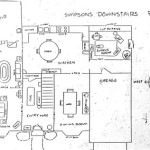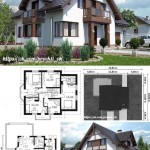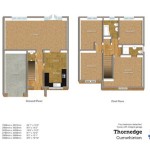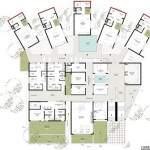Essential Aspects of a Typical Japanese Home Floor Plan
Japanese home floor plans are renowned for their unique and functional designs, tailored to the specific cultural and lifestyle preferences of the Japanese people. Understanding the essential aspects of these floor plans can provide valuable insights into Japanese culture and enhance the appreciation of their architectural ingenuity.
Emphasis on Spaciousness and Natural Light
Japanese homes typically prioritize spaciousness and natural light. Large windows and sliding doors, known as fusuma, allow ample sunlight to enter the living areas, creating a bright and inviting atmosphere. The use of tatami mats, which are woven straw mats, contributes to the sense of spaciousness and provides a comfortable and versatile flooring option.
Distinct Separation of Public and Private Spaces
Traditional Japanese homes feature a clear distinction between public and private spaces. The genkan, or entryway, serves as a transition zone between the outside world and the private sanctum of the home. The genkan is often sunken below the level of the rest of the house, providing a convenient area for removing shoes before entering the living areas.
Multipurpose Spaces
Japanese homes often incorporate multipurpose spaces that can serve various functions. Rooms can be easily converted from a bedroom to a living room or dining area by adjusting the placement of fusuma and other sliding partitions. This flexibility allows for efficient space utilization and adaptability to changing needs.
Tatami Rooms
Tatami rooms, known as washitsu, hold a special place in Japanese homes. These rooms are covered in tatami mats and are traditionally used for formal occasions, tea ceremonies, or as guest rooms. The presence of tatami rooms adds a touch of tradition and cultural heritage to the home.
Efficient Storage Solutions
Japanese homes prioritize efficient storage solutions to accommodate a variety of belongings in limited spaces. Built-in shelves, drawers, and closets are meticulously designed to maximize storage capacity. Additionally, the use of under-bed storage spaces and the incorporation of sliding doors help to save space and maintain a clean and organized environment.
Indoor-Outdoor Connection
Many Japanese homes feature a seamless connection between the interior and exterior spaces. Gardens, patios, and verandas are often integrated into the home's design, providing opportunities for residents to enjoy the outdoors and experience a sense of tranquility within their living spaces.
Modern Influences
While traditional Japanese home floor plans have endured for centuries, modern influences have integrated into contemporary designs. The incorporation of Western-style kitchens, bathrooms, and appliances reflects the evolving lifestyles of Japanese people. However, many homes still retain traditional elements, such as tatami rooms and sliding partitions, to maintain a connection to their cultural heritage.

Typical Home Layouts Differences Between Japan And Abroad

Traditional Japanese House Style Plans

Japanese Home Design Ideas Pictures 331 Sqm Homestyler

Traditional Japanese Home Floor Plan Cool House Plans Ideas Des Architecture Style

Japanese Home Design Ideas Pictures 331 Sqm Homestyler

The Layout Of Ground And First Floor A Traditional Japanese House Scientific Diagram

Hachidori Floor Plan Traditional Japanese House Japan Design Home Plans

Traditional Japanese House Floor Plan Google Search Plans

3ldk Traditional Style House For Saitama Floor Plan Blog

Traditional Japanese Architecture Tea Ceremony Japan Experiences Maikoya








